Acrylic Pointillism, Oil & Coldwax, Mixed Media Original & Custom Fine Art for Your Meditation, Office or Living Spaces - Shop Online or Email for More Information
T (760) 880-8725
Email: studio@craigallenlawver.art
Craig Allen Lawver
16-566 Keaau-Pahoa Rd #188-205 Keaau, Hawaii 96749
JOURNAL : Essay
History & Context
Thoughts & Notes
Frames of reference
I might argue, my primary area of exploration in art making is in the practice or technique Pointillism. It is a central technique, process and method of painting. This is not a style I see widely used by contemporary artists. To be sure, there are contemporary examples. And there are plenty of historical references. But questions concerning the technique of pointillism have arisen at art shows where I have exhibited works in this manner or style of painting.
The quick answer to the question is to just say “I am a Pointillist”. It is fast and certainly accurate. But I have always felt it offers little in the way of detail or context. However, exhibits are seldom great places to engage in long and detailed conversations. People are moving along, and usually have much they want to see. This post will, hopefully, answer some of the questions I have encountered over the years.
Terms such as “Neo-Impressionism”, “Divisionism” and “Chromoluminarism” are often used when describing art work using styles similar to mine. “Pointillism” is the word most widely known. It was a brief artistic movement, mostly disseminated by Georges Seurat (1859-91). Pointillism made use of tiny dots of color that, from a distance, blurred together into a recognizable image. For example, see A Sunday Afternoon on the Island of La Grande Jatte (think people on a riverbank). Seurat attempted to replace the emotional subjectivity of the visual process with a scientific objectivity based on the laws of optics. As such, he explored the composition of color and form through the analysis of light and the breakdown of color into its constituent elements.
The painter Paul Signac, who, with the premature death of Seurat in 1891, continued the elaboration of Pointillist theory rejected this term and preferred instead “Divisionism” to define his process and method.
According to Signac:
“In the Neo-Impressionist technique, many people unresponsive to the effects of harmony, color, and light have seen only the method. Divisionism is a complex system of harmony, an aesthetic rather than a technique. The dot is only the means”
Signac was a man of his times. As a result, he arrived at the conclusion, that behind the scientific explanation of the technique, there were political aspects to the work. He believed in the “overthrow the old social edifice.” Signac wrote, “Justice in sociology, harmony in art, the same thing. The anarchist painter is not someone who will paint anarchist paintings. That would be to fall prey to the same error as made by all too many well-intentioned revolutionaries who demand that works of art have a precise socialist content.”
Paul Signac was as much a writer and theorist as a painter. His work and philosophy paved the way for future artists. In his 1890 work, “Portrait of de Félix Fénéon”, the abstraction of the background can be spiritually interpreted, a development that flagged the way to Symbolist-style interpretations. “Symbolism” was a reaction in favor of spirituality, the imagination, and of dreams. Signac's choice of Fénéon was no accident. It was a symbolic choice, and very much in keeping with his own political viewpoints. Fénéon, was an ardent anarchist during a period of enormous economic and social disparities. He believed in the potential of avant-garde art to promote a more harmonious, egalitarian world.
The innovative technique initially developed by these two artists was adopted and further expanded upon by a range of artists working in Europe. Among these artists, is the Italian Giovanni Segantini, who used short and long thin brushstrokes as opposed to actual points or dabs of paint. Segantini’s work received erratic critical reception. Due to the fact, that Divisionism in Italy at the time was frequently criticized as a symptom of decline. Nevertheless, in the long view of history he has been recognized as a trailblazer. In fact, Segantini is now considered an important artist in the history of modernism. I recommend the book 'Giovanni Segantini' by Beat Stutzer for examples of this artist's process and method, as well as details of his career.
The practice of pointillism can lead as far from European painting, philosophy and politics. It has lead me, personally, to the work of the “Aboriginal Dot Painters” of Australia. The process and method can be found in the dot paintings of the Australian desert peoples. These works were once often referred to as sand paintings.
"The Aboriginal paintings depict 'Dreamings', ancestral beings whose travels across the Australian terrain in their immemorial yet eternally present 'Dreamtime' underwrite the meanings that constitute Aboriginal culture, which are coded primarily in terms of the relationships of groups and individuals to determinate features of the landscape."
This original reference stems from their beginnings, which are found in examples of ground paintings that were created by clans as they moved nomadically across the landscape. Traditionally, the clan would gather around a central site, which would be cleared so that these important cultural "paintings" could be created using seeds, flowers, sand, stones, feathers, and other natural materials.
The clan elders would sing their way through the painting process, imparting tribal knowledge to younger members of the clan. The various symbols were and, to some extent, are today explained and interpreted as lessons in the clan's history and heritage, its creation story, and the location of sacred sites, food sources, and places to find water. In our modern times, these designs are painted on board and canvas for sale to the outside world. And, while the exact meanings of the designs are usually unclear to outsiders, they often have deep cultural significance to clan members.
I am not concerned with working in strict accordance with any artistic movement, process or method. However, I do think about these definitions. I do so, because I understand myself to exist within the context of the larger world around me. Both in a contemporary and historic sense.
Am I a “Pointillist,” a “Neo-Impressionist,” “Divisionist,” or a Dot Painter? My style in this body of work is seeded in the science of “Divisionism” using a pointillist technique but mirrors the inner workings of my mind and spirit in somewhat of a “Symbolist” manner.
In the end, it does, and it doesn’t matter what it’s called. I practice the technique of pointillism. To be specific, it is my process and method. Saying that is sometimes enough. I concede, at other times, deeper frames of reference and context need to be arrived at. Conversely, they do not define me as an artist or person. What I do know, is that I am an artist who chooses to paint using dots of color because I enjoy the process and I like the challenge.
I find the process or pointillism to be meditative. It can be Zen-like in its frustrating nature. And, comparable to Zen, which emphasizes personal expression of experiential wisdom in the attainment of enlightenment, I live the experience of painting. I grow, think about the world around me, and work towards becoming a better human being because of it. When I paint, I live in the moment; I feel truly present in a way that somehow seems effortless. This is a feeling I often struggle to achieve, without success, in other areas of my life.
Like Seurat, I am fascinated by light and color. I find an endless delight in how it makes me feel and think. Doubtless, there is an equal amazement in what light is and where color comes from. The history of color and the origin of the pigments I use fascinate me. In the wake of Signac and the Symbolists, my work is rife with cypher, enigma, and pictorial representations that have meaning culturally. More importantly, they do so on a personal spiritual level.
Like the Dot Painters of Australia, I am singing a song when I paint. I am telling the story of my life. It is a story filled with my history, my experience, and my sacred places. With my terrors and joys. Through art, I am giving you a glimpse at the workings of my inner mind and thinking. But, at the same time, painting is a path to those places I find metaphorical nourishment. My work is my interpretation of the world around me and the lens through which I see it.


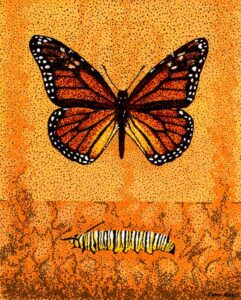
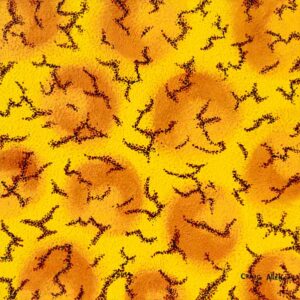
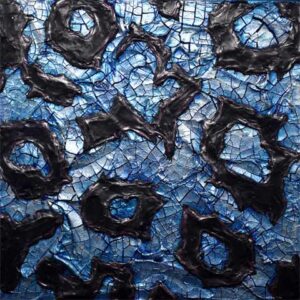
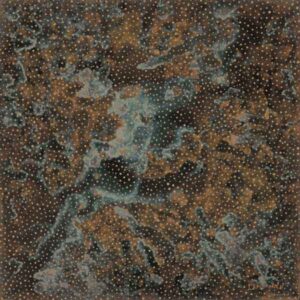
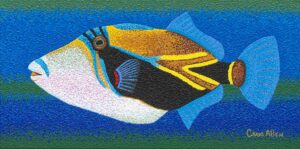
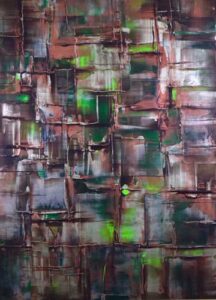
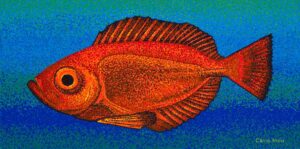
Facebook: Craig Allen Lawver Art